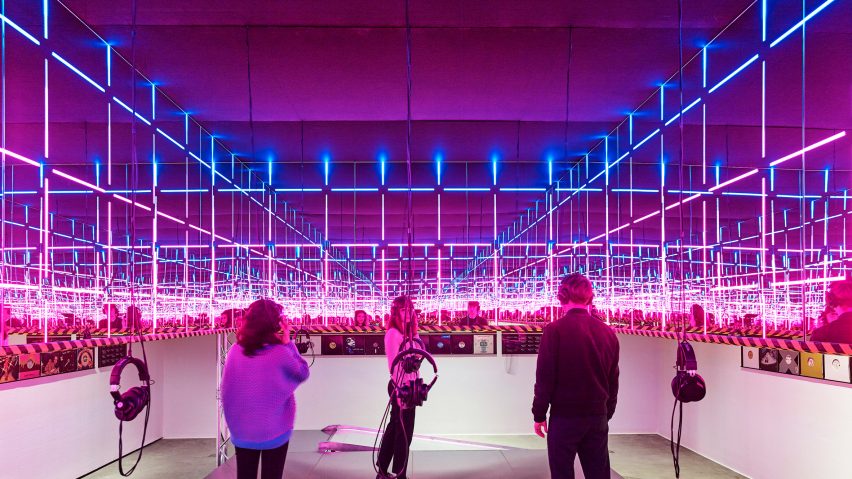
Vitra Design Museum showcases five decades of clubbing culture in Night Fever exhibition
The interiors and graphics of some of the world's most famous nightclubs are profiled in a major new exhibition at the Vitra Design Museum.
Night Fever officially opened today at the Vitra Design Museum in Weil am Rhein, Germany.
The gallery has been filled with photographs, flyers, artworks and records relating to some of the world's most iconic nightclubs, dating from the 1960s to present day. Among them are Manchester's Hacienda and the iconic Studio 54 in New York.
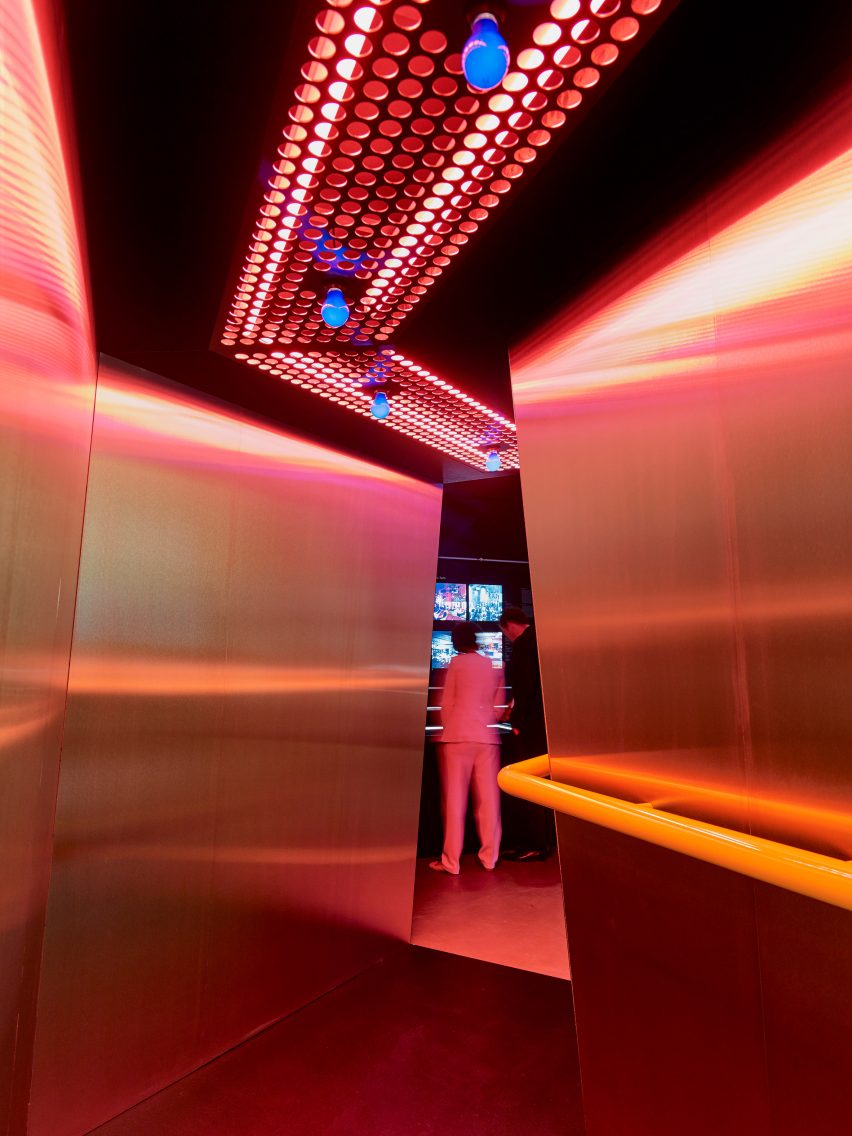
The exhibition aims to explore the "relationship between club culture and design", looking to the nightclub as a point of inspiration for architects and designers alike.
Organised in a chronological order, exhibits includes a site-specific music and light installation created by Konstantin Grcic and lighting designer Matthias Singer.
"The nightclub is one of the most important design spaces in contemporary culture," said Vitra. "Since the 1960s, nightclubs have been epicentres of pop culture, distinct spaces of nocturnal leisure providing architects and designers all over the world with opportunities and inspiration."
"The multidisciplinary exhibition reveals the nightclub as much more than a dance bar or a music venue; it is an immersive environment for intense experiences."
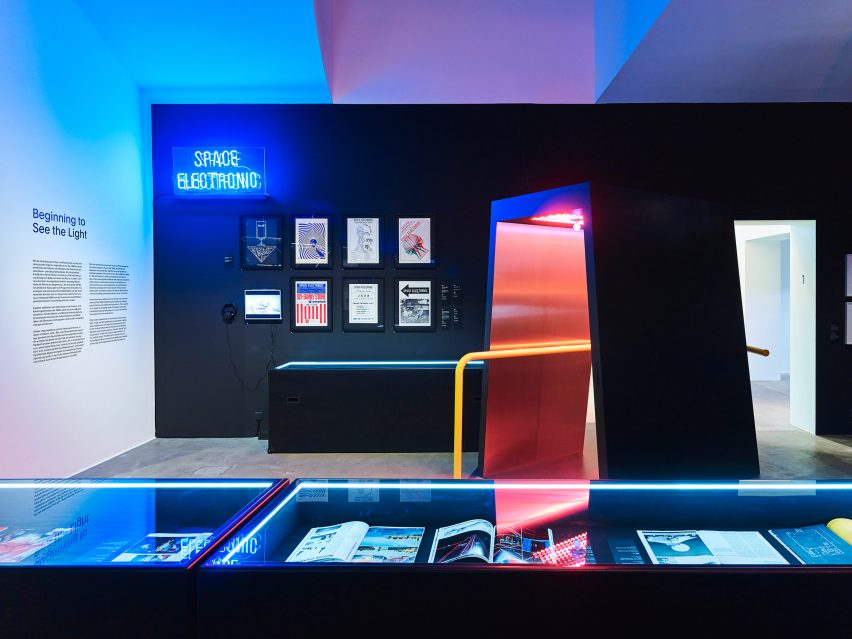
Visitors enter the exhibition in the 1960s, where designs from clubs including New York's Electric Circus and Florence's Space Electronic are on show.
In this section, Italy's so-called "radical period" – a movement that saw creative practices take on an avant-garde style – is also explored.
Venues associated with the radical period are profiled, including the multifunctional Piper space in Turin, designed by Giorgio Ceretti, Pietro Derossi and Riccardo Rosso with a modular interior.
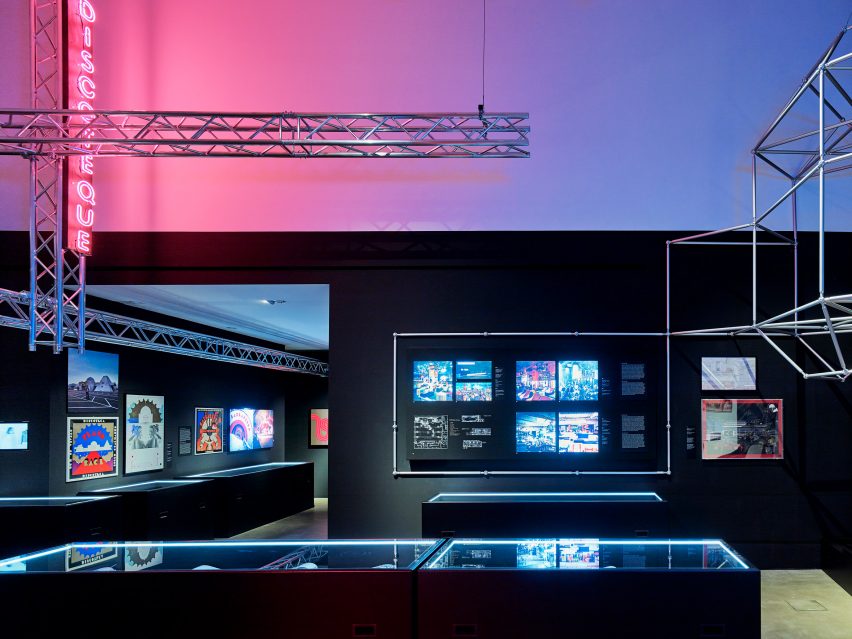
Moving onto the 1970s, Night Fever looks to the influence of New York's Studio 54. Founded in 1977 by Ian Schrager and Steve Rubell, the club gained cult status thanks to its celebrity visitors and opulent interiors.
Much of the 80s section focuses on Manchester's Hacienda, which featured post-industrial style interiors by architect and designer Ben Kelly.
The influence of the Hacienda and its impact on the acid-house genre spread to Berlin in the early 1990s – a period detailed in the next section of the exhibition.
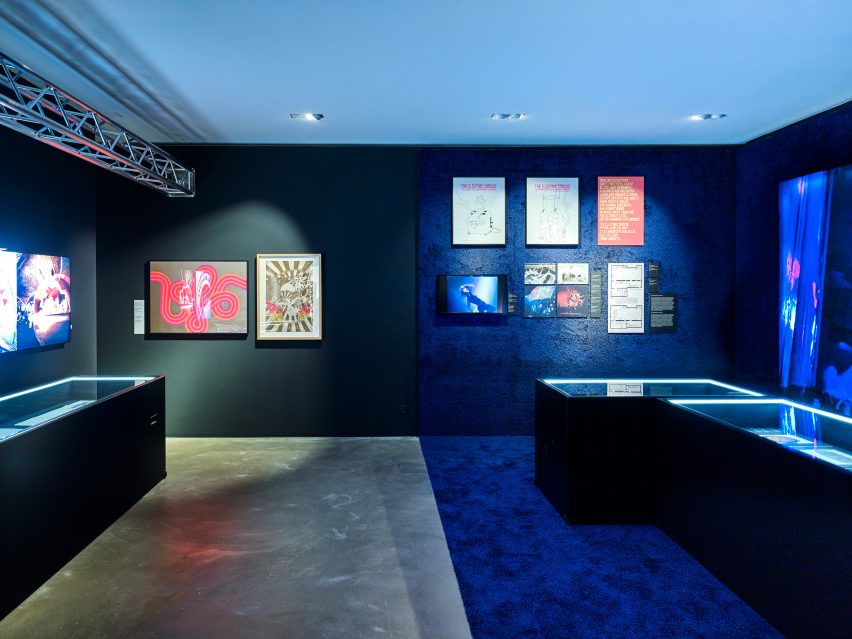
Soon after the Berlin Wall came down, ravers began occupying disused and derelict spaces to create clubs, such as Tresor. Organisers would send out details of parties through flyers, which often followed a heavily graphic aesthetic emblazoned with lo-fi typography.
In 2004, Berlin became home to Berghain, which is located inside a former heating plant.
"[This demonstrated] yet again how a vibrant club scene can flourish in the cracks of the urban fabric, on empty lots and in vacant buildings," said Vitra.
Finally, the exhibition looks to the complexities of modern-day nightclub design.
"On the one hand, club culture is thriving and evolving as it is adopted by global brands and music festivals; on the other, many nightclubs have been pushed out of the city or survive merely as sad historical monuments and modern ruins of a hedonistic past," said the curators.
"At the same time, a new generation of architects is addressing the nightclub typology," they added.
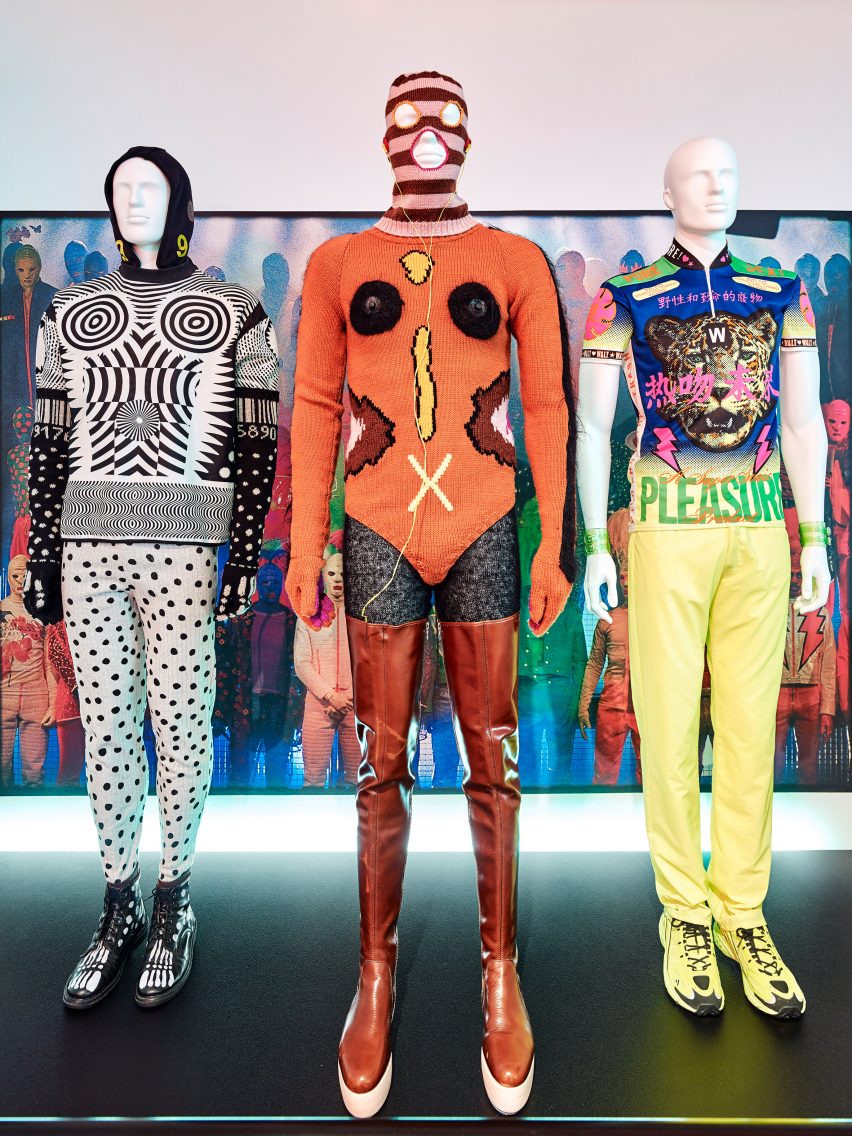
Those thought to be part of this include Dutch firm OMA, which developed a proposal for a new Ministry of Sound club in London in 2015, but which was scrapped shortly after.
Having been briefed by the nightclub owners, the architects proposed a building that changes its shape from night to day, through walls that mechanically lift up and down.
Night Fever is open to the public from 17 March to 9 September 2018.